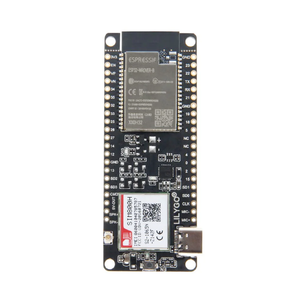
TTGO T-Call (LilyGO) is a development board based on the ESP32 microcontroller using XTENSA architecture.
This board features a maximum CPU frequency of 240 MHz and 4MB flash memory.
About TTGO T-Call (LilyGO)
The TTGO T-Call is a powerful ESP32 development board designed for cellular IoT applications, featuring integrated GSM/GPRS connectivity alongside Wi-Fi 802.11 b/g/n and Bluetooth 4.2 + BLE. 📶📱
Powered by an ESP32 dual-core processor at 240 MHz, with 4MB/8MB flash memory and 8MB PSRAM, it's optimized for demanding IoT projects requiring reliable remote connectivity. ⚡
The board supports multiple cellular modules: SIM800H (2G GSM/GPRS) and A7670E (LTE/4G) for global cellular communication. It includes a nano SIM card slot, GSM antenna connector, and comprehensive cellular interfaces. 🔌
Features USB Type-C for programming, Li-Po battery support with charging circuit, and extensive GPIO pins supporting ADC, DAC, PWM, I2C, SPI, UART, I2S, and CAN interfaces. Operating at 3.3V with robust power management. 🔋
Where to Buy TTGO T-Call (LilyGO)
Prices are subject to change. We earn from qualifying purchases as an Amazon Associate.
📋 Technical Specifications
Complete technical specification details for TTGO T-Call (LilyGO)
🔌 USB
🛰️ Connectivity
🧠 Microcontroller
✨ Features & Pins
- • Cellular Connectivity
- • Li-Po Battery Support
- • Nano SIM Slot
TTGO T-Call (LilyGO) Pinout Diagram
Complete pin reference for TTGO T-Call (LilyGO)
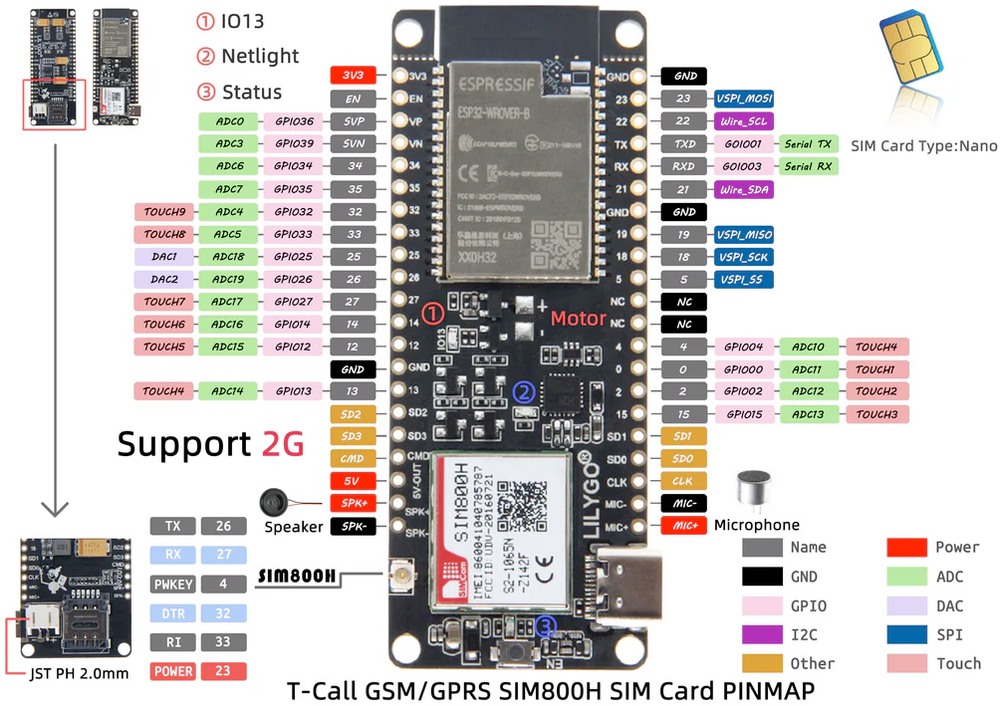
The TTGO T-Call pinout provides extensive connectivity options for cellular IoT projects. Power management includes 5V input, 3.3V regulated output, and battery charging circuitry.
Cellular connectivity features dedicated SIM card slot and GSM ANT antenna connector. Communication interfaces include multiple UART channels for cellular module communication, plus standard ESP32 GPIO pins.
GPIO pins support digital I/O, ADC (18 channels), PWM, and multiple protocols. The board includes EN reset button and comprehensive peripheral interfaces for sensor integration and external device connectivity.
✅ Safe Pins to Use
These pins are safe for general GPIO usage without boot or system conflicts
💡 Why Are These Pins Safe?
⚠️ Pins to Avoid or Use with Caution
Reserved for critical functions. Misuse may cause boot failures, programming issues, or system conflicts.
Boot behavior & flash voltage
Low-level debugging interface
USB Serial/JTAG communication
Memory & PSRAM connections
Debugging & firmware uploads
| PIN | Label | Why Avoid | Type |
|---|---|---|---|
| IO0 | GPIO0 | Must be HIGH during boot for normal startup; if held LOW on reset, forces flash programming mode. | 🛠️ Strapping |
| IO2 | GPIO2 | If driven HIGH on reset (while IO0 is LOW), selects an unsupported SDIO boot mode, causing boot failure. | 🛠️ Strapping |
| IO4 | GPIO4 | Sampled at reset for boot config; should not be driven at boot (affects boot mode timing). | 🛠️ Strapping |
| IO5 | GPIO5 | Must be HIGH during boot; if pulled LOW at reset, alters SDIO slave timing and may prevent normal boot. | 🛠️ Strapping |
| IO12 | MTDI (GPIO12) | Keep LOW during boot (internal PD); pulling HIGH at reset selects 1.8V flash mode, causing flash brownout if 3.3V flash is used. | 🛠️ Strapping |
| IO13 | MTCK (GPIO13) | Used for JTAG debugging (TCK); avoid using as GPIO if JTAG is needed. | 🪛 Other |
| IO14 | MTMS (GPIO14) | Used for JTAG debugging (TMS); driving it as GPIO may interfere with JTAG or produce spurious signals at boot. | 🪛 Other |
| IO15 | MTDO (GPIO15) | Keep HIGH during boot (internal PU); if LOW on reset, bootloader log is silenced and boot mode may change. | 🛠️ Strapping |
| IO16 | GPIO16 | Connected to internal PSRAM on PSRAM-enabled modules; not usable as GPIO on those modules. | ⚡ Flash |
| IO17 | GPIO17 | Connected to internal PSRAM on PSRAM-enabled modules; not usable as GPIO on those modules. | ⚡ Flash |
| IO34 | GPIO34 | Cannot be used as output (no drive capability); only suitable for analog/digital input. | 🪛 Other |
| IO35 | GPIO35 | Cannot be used as output; only suitable for input. | 🪛 Other |
TTGO T-Call (LilyGO) Additional Information
More details about TTGO T-Call (LilyGO)
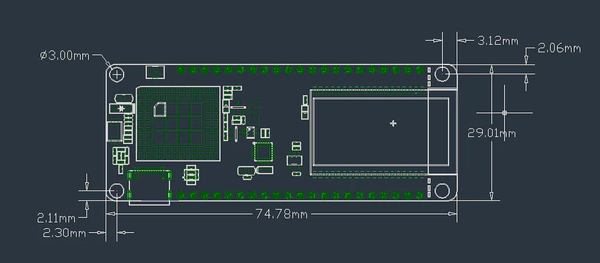
TTGO T-Call Cellular Modules
📱 Available Models
- SIM800H: 2G GSM/GPRS module supporting quad-band GSM (850/900/1800/1900MHz) and GPRS data transmission
- A7670E: LTE Cat.1 module with global LTE bands, ideal for IoT applications requiring higher data speeds
- SIM800L: Compact 2G module option for basic cellular connectivity
⚠️ Important Notes
The A7670E module has LTE band limitations in some regions (e.g., US LTE bands may not be fully supported). Check cellular band compatibility for your location. SIM800H provides reliable 2G connectivity but limited data speeds.
💡 Perfect For
Ideal for remote monitoring, asset tracking, smart agriculture, and any IoT project requiring cellular connectivity with WiFi/Bluetooth backup options.
Useful Links
Datasheets and resources for TTGO T-Call (LilyGO)
TTGO T-Call (LilyGO) Custom Pin Mapping
Pin configuration and GPIO mapping for TTGO T-Call (LilyGO)
| Pin | Function | ESP Pin | I/O Type | Description |
|---|---|---|---|---|
| 4 | TX | GPIO17 | OUTPUT | UART2 TX for Cellular Module |
| 5 | RX | GPIO16 | INPUT | UART2 RX for Cellular Module |
| 6 | IO0 | GPIO0 | BIDIRECTIONAL | GPIO0, Boot Mode Selection |
| 7 | IO2 | GPIO2 | BIDIRECTIONAL | GPIO2, General Purpose I/O |
| 8 | IO4 | GPIO4 | BIDIRECTIONAL | GPIO4, General Purpose I/O |
| 9 | IO5 | GPIO5 | BIDIRECTIONAL | GPIO5, General Purpose I/O |
| 10 | IO12 | GPIO12 | BIDIRECTIONAL | GPIO12, ADC or GPIO |
| 11 | IO13 | GPIO13 | BIDIRECTIONAL | GPIO13, ADC or GPIO |
| 12 | IO14 | GPIO14 | BIDIRECTIONAL | GPIO14, ADC or GPIO |
| 13 | IO15 | GPIO15 | BIDIRECTIONAL | GPIO15, ADC or GPIO |
| 14 | IO16 | GPIO16 | BIDIRECTIONAL | GPIO16, General Purpose I/O |
| 15 | RXD0 | GPIO3 | INPUT | UART0 Receive |
| 16 | TXD0 | GPIO1 | OUTPUT | UART0 Transmit |
| 17 | IO17 | GPIO17 | BIDIRECTIONAL | GPIO17, General Purpose I/O |
| 18 | IO18 | GPIO18 | BIDIRECTIONAL | GPIO18, General Purpose I/O |
| 19 | IO19 | GPIO19 | BIDIRECTIONAL | GPIO19, General Purpose I/O |
| 20 | IO21 | GPIO21 | BIDIRECTIONAL | GPIO21, I2C SDA |
| 21 | IO22 | GPIO22 | BIDIRECTIONAL | GPIO22, I2C SCL |
| 22 | IO23 | GPIO23 | BIDIRECTIONAL | GPIO23, SPI MOSI |
| 23 | IO25 | GPIO25 | BIDIRECTIONAL | GPIO25, DAC1 |
| 24 | IO26 | GPIO26 | BIDIRECTIONAL | GPIO26, DAC2 |
| 25 | IO27 | GPIO27 | BIDIRECTIONAL | GPIO27, ADC |
| 26 | IO32 | GPIO32 | BIDIRECTIONAL | GPIO32, ADC |
| 27 | IO33 | GPIO33 | BIDIRECTIONAL | GPIO33, ADC |
| 28 | IO34 | GPIO34 | INPUT | GPIO34, ADC Input Only |
| 29 | IO35 | GPIO35 | INPUT | GPIO35, ADC Input Only |
Pin Mappings
Complete pinout and GPIO mapping for TTGO T-Call (LilyGO)
| Pin | Analog | Touch | PWM | Other |
|---|---|---|---|---|
| 0 | T1 | |||
| 1 | PWM | TX | ||
| 2 | A12 | T2 | PWM | |
| 3 | PWM | RX | ||
| 4 | A10 | T0 | PWM | |
| 5 | PWM | |||
| 12 | A15 | T5 | PWM | |
| 13 | A14 | T4 | PWM | |
| 14 | A16 | T6 | PWM | |
| 15 | A13 | T3 | PWM | |
| 16 | PWM | |||
| 17 | PWM | |||
| 18 | PWM | |||
| 19 | PWM | |||
| 21 | PWM | SDA | ||
| 22 | PWM | SCL | ||
| 23 | PWM | MOSI | ||
| 25 | A18 | DAC1 | ||
| 26 | A19 | DAC2 | ||
| 27 | A17 | T8 | PWM | |
| 32 | A4 | T9 | PWM | |
| 33 | A5 | T10 | PWM | |
| 34 | A6 | INPUT | ||
| 35 | A7 | INPUT |
Default Tools & Configuration
Build and upload settings for TTGO T-Call (LilyGO)
| Setting | Value |
|---|---|
| Bootloader tool | esptool_py |
| Uploader tool | esptool_py |
| Network uploader tool | esp_ota |
| Bootloader address | 0x1000 |
| Flash mode | dio |
| Boot mode | dio |
| Maximum upload size | 1280 KB (1310720 bytes) |
| Maximum data size | 320 KB (327680 bytes) |
The TTGO T-Call (LilyGO) uses esptool_py for uploads , esp_ota for OTA updates, and esptool_py bootloader at 0x1000.
Flash mode: dio | Boot mode: dio
Max sketch size: 1280 KB | Max data size: 320 KB
Similar Boards
Other development boards with ESP32 microcontroller
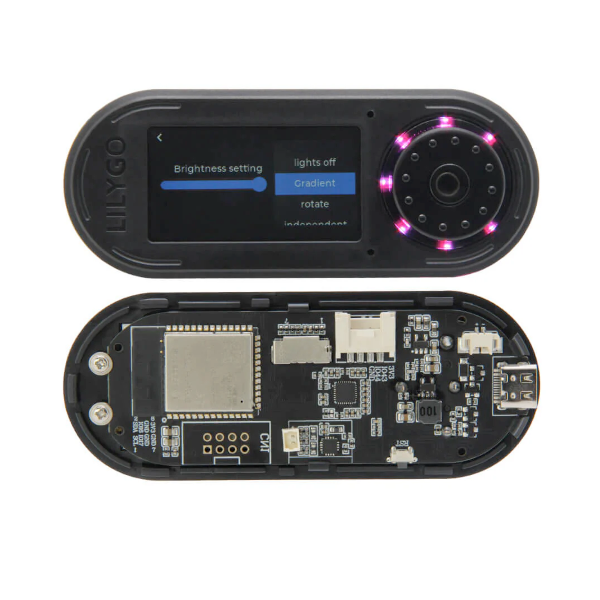
LilyGo T-Embed
LilyGo T-Embed development board is based on esp32s3 microcontroller and uses xtensa architecture.
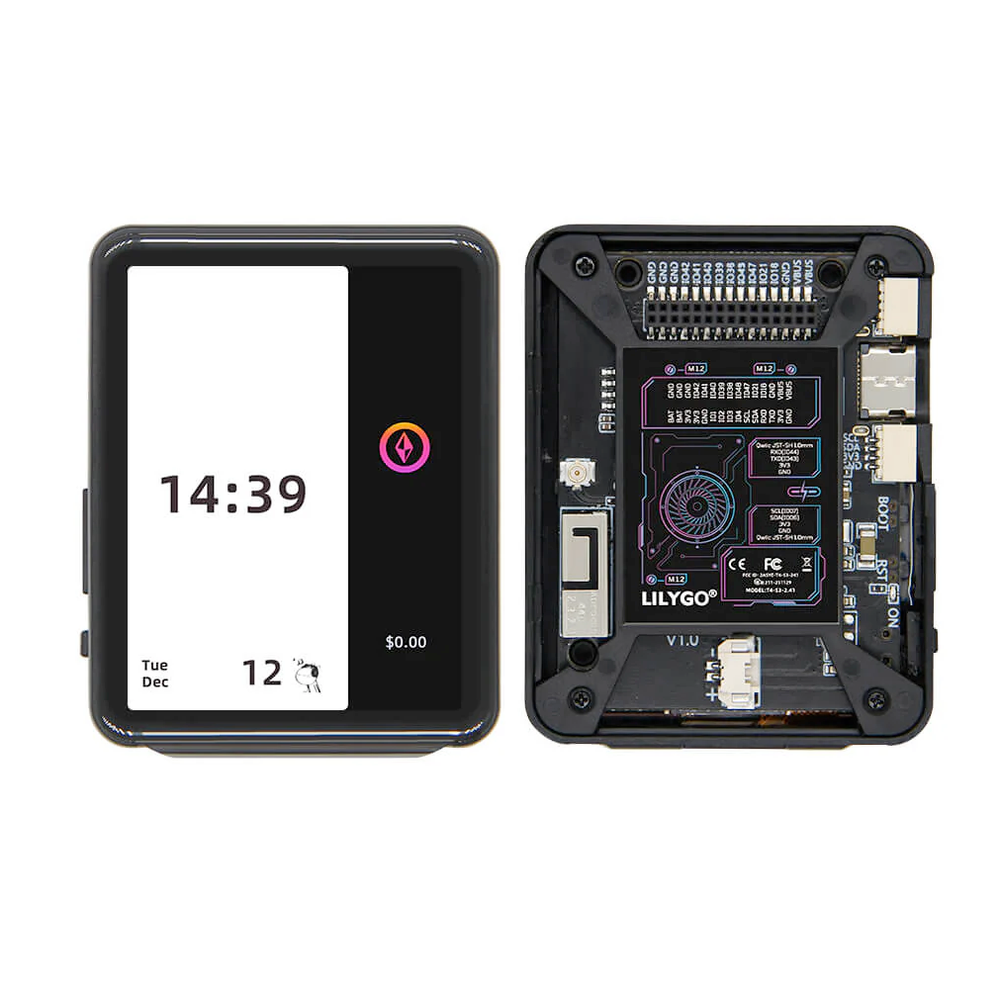
LilyGo T4-S3
LilyGo T4-S3 development board is based on esp32s3 microcontroller and uses xtensa architecture.
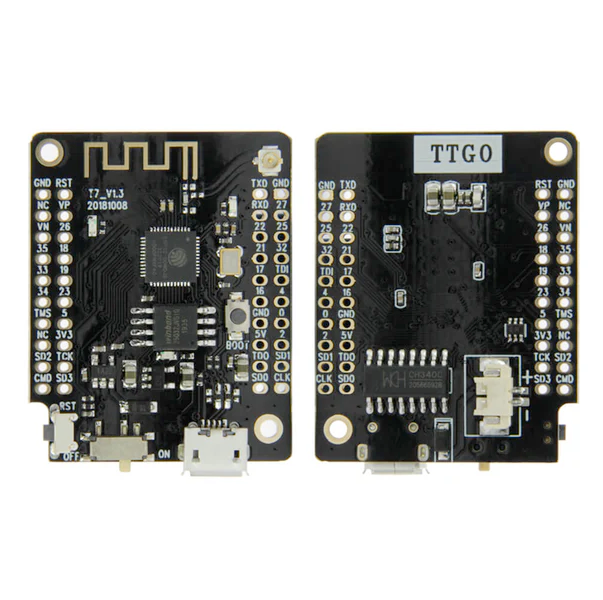
TTGO T7 V1.3 Mini32
TTGO T7 V1.3 Mini32 development board is based on esp32 microcontroller and uses xtensa architecture.


